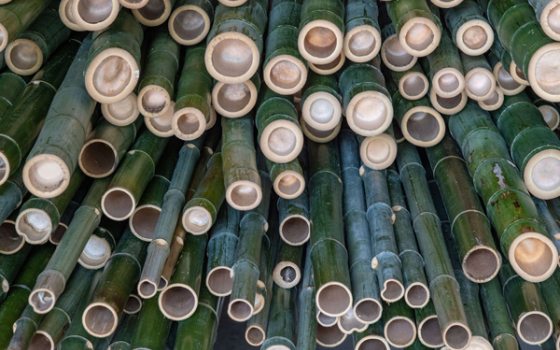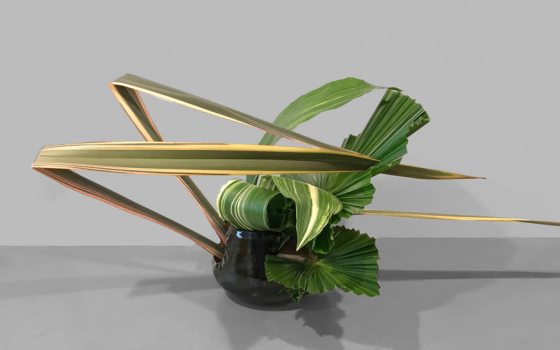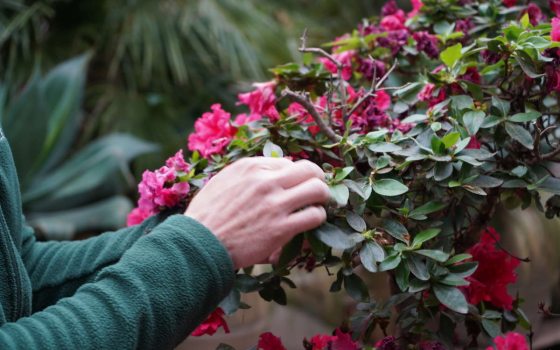Making its official opening October 3, our Blooms & Bamboo: Chrysanthemum and Ikebana Sogetsu Artistry is unlike anything ever seen at Longwood … or anywhere else in the world. From its concept and design to its multi-layered installation, it provides an experience difficult to put into words. A few words do come to mind, though. Breathtaking. Tremendously inspirational. All-out amazing. And something you have to see to believe.
This astounding display is anchored by two towering, yet intricate and graceful bamboo installations termed Pulsation in the Conservatory’s Center Walk and on the Fern Floor, exclusively designed for Longwood by Headmaster of Sogetsu Iemoto Akane Teshigahara of the Sogetsu School of Ikebana. The traditional art of Japanese floral design, Ikebana serves as an expression of Japan’s deep connection with nature. Spanning more than 600 years of history, this art features hundreds of different Ikebana schools, each developing its own forms that depict the ideal of beauty and grace. One of the most modern of such schools, the Sogetsu School of Ikebana focuses on free expression and is based on the view that Ikebana is a way for human beings to express themselves. Teshigahara shares, “Although I have created bamboo installations in a variety of styles in Japan and around the world for more than 20 years, the two installations at Longwood will be the greatest and finest of all, both in terms of scale and bamboo-manipulation techniques.” The display is rounded out with 23 Ikebana arrangements throughout the Conservatory, as well as a visionary sculpture created by the founder of the Sogetsu School.
In support of Teshigahara’s designs, 635 pieces of 26-foot-long bamboo poles were delivered to Longwood last month, representing Japanese timber bamboo, or madake (Phyllostachys bambusoides), and Meyer’s bamboo (Phyllostachys meyeri) of 4-inch and 2.5-inch diameters, respectively. These massive poles of bamboo were harvested from a specialty nursey and landscaping company with well-established groves in Georgia.
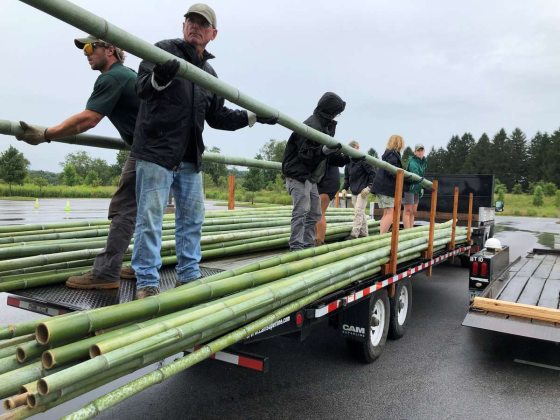
Following the bamboo’s delivery, five team members from the Sogetsu School headquarters in Tokyo arrived at Longwood for the installation. Approximately 70 volunteers from local Sogetsu chapters, as well as Longwood staff assisted in the installation process from start to finish.
The Sogetsu team led the week-long process of preparing and banding the bamboo for both installations behind the Conservatory. To complete the banding process, a portion of the bamboo rods were split into eight pieces. Once split, the bamboo pieces were wrapped together using steel wire, similar to a twist-tie procedure. Used in both the Center Walk and Exhibition Hall structures, the bands are an integral part of their design and construction.
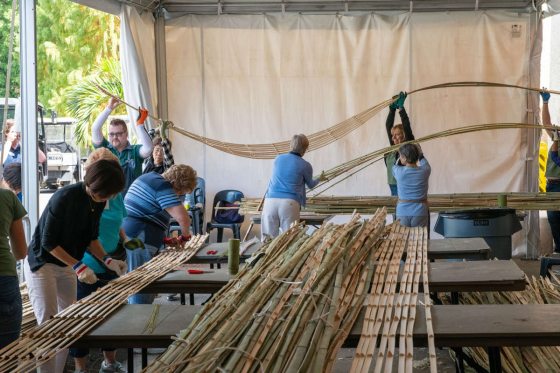
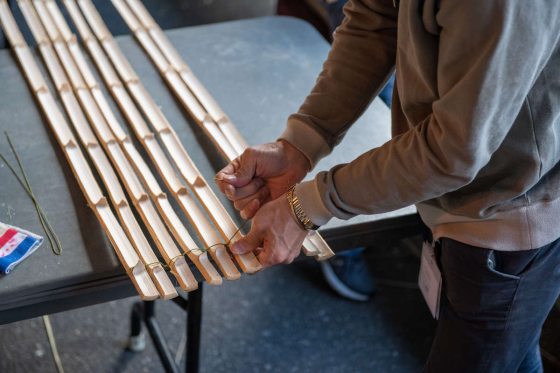
First to be built was the Center Walk installation, constructed of approximately 300 rods of bamboo to achieve Teshigahara’s vision to “… demonstrate the beauty of simplicity derived from bamboo’s linearity and depict a pulsing life connecting to the future.” To prepare for the installation, Longwood staff first emptied the Center Walk beds and laid plywood as a structural base.
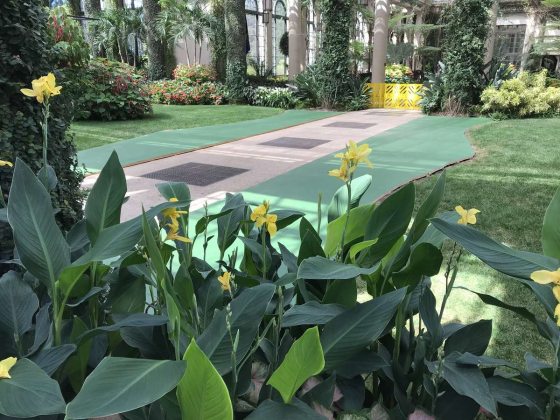
All load-bearing bamboo rods were erected first and inserted into metal sleeves; the sleeve plates had been bolted to the plywood laid along the Center Walk. All bamboo rods that cross or touch another piece were drilled together, with a large metal wire placed through the hole, crimped on each end and clipped. Plastic bands were also added for support.
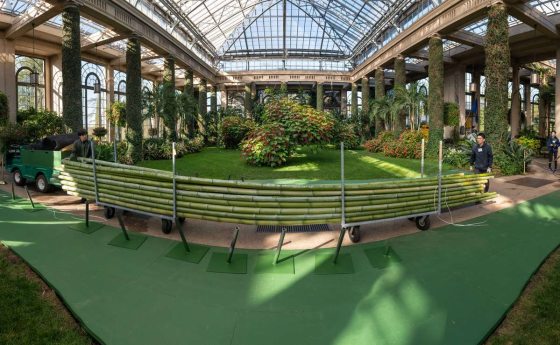
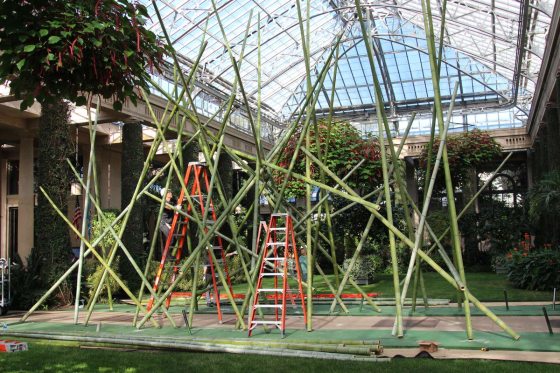
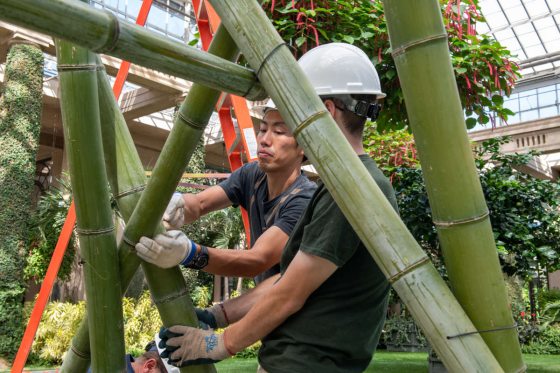
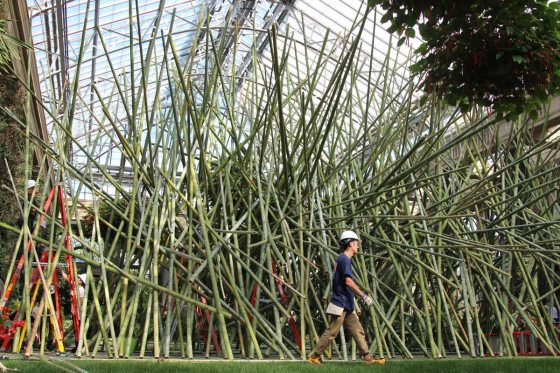
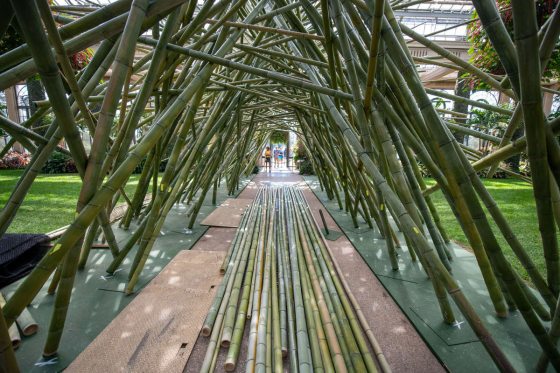
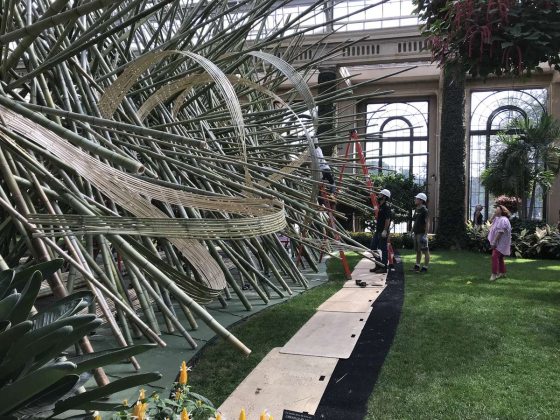
Next to be built was the Exhibition Hall installation, “a complex structure with curved elements symbolizing the birth of an unknown life,” according to Teshigahara. The first step was to build a supporting structure base for each of the two towers. To account for their scale, the bases were fabricated while lying on their side.
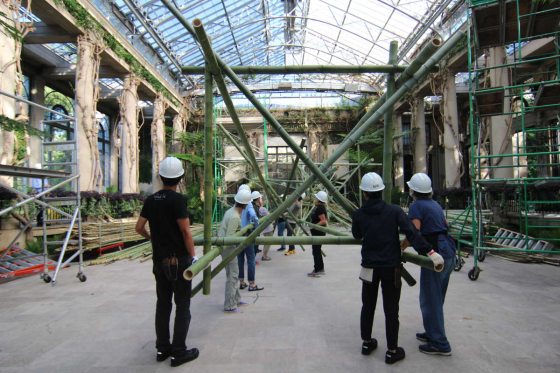
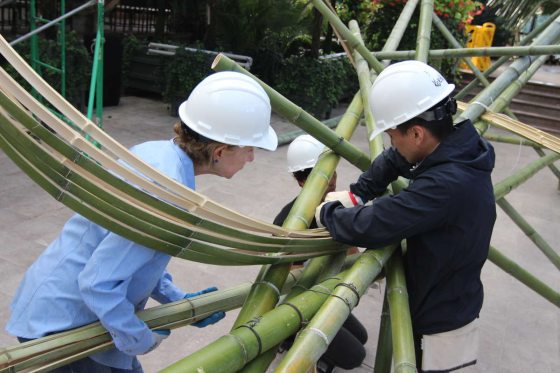
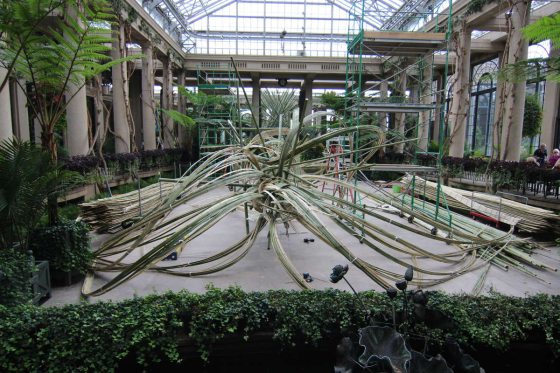
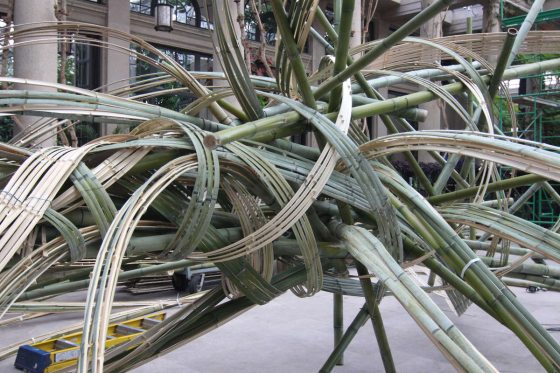
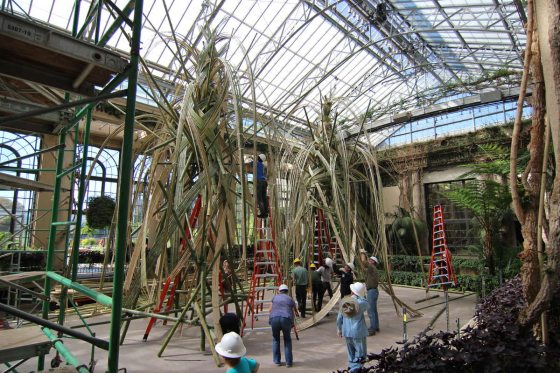
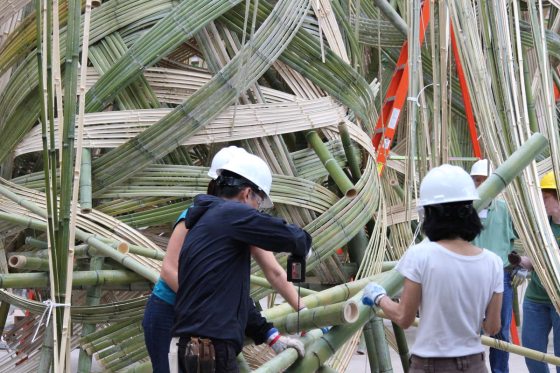
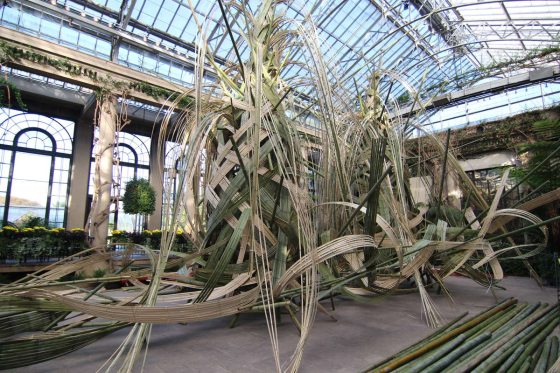
Along with the Center Walk and Exhibition Hall bamboo installations, Blooms & Bamboo features 23 smaller Ikebana arrangements crafted by local Sogetsu chapter members and Sogetsu artisans from Japan. Inspired by floating bubbles to the appearance of sunshine in the woods, these beautiful arrangements can be found throughout the Conservatory. In addition, a sculpture by Sofu Teshigahara, the founder of the Sogetsu School of Ikebana and grandfather of Headmaster Akane Teshigahara, is on display in the East Conservatory.
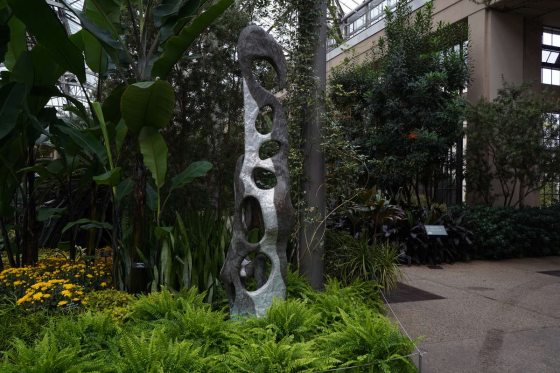
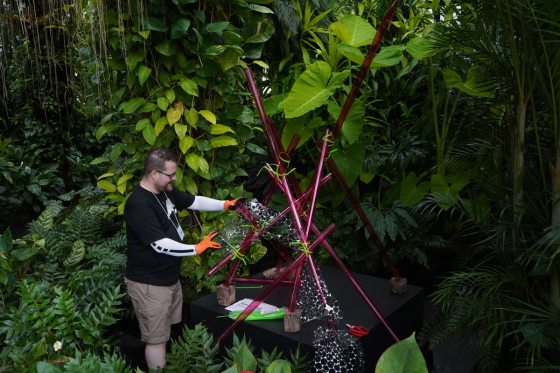
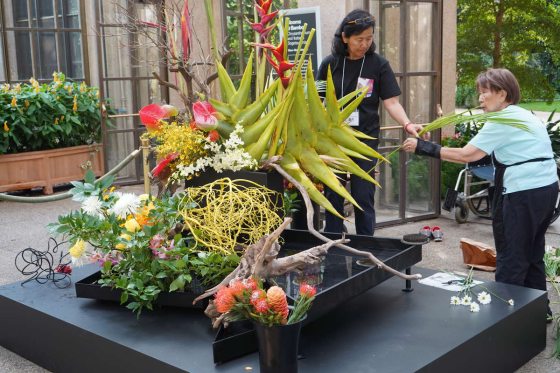
From two towering bamboo art forms … to breathtaking Ikebana arrangements … to thousands of gorgeous chrysanthemums … take in every stunning view of Blooms & Bamboo, on view now through November 17.
